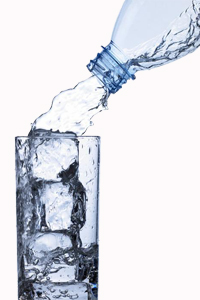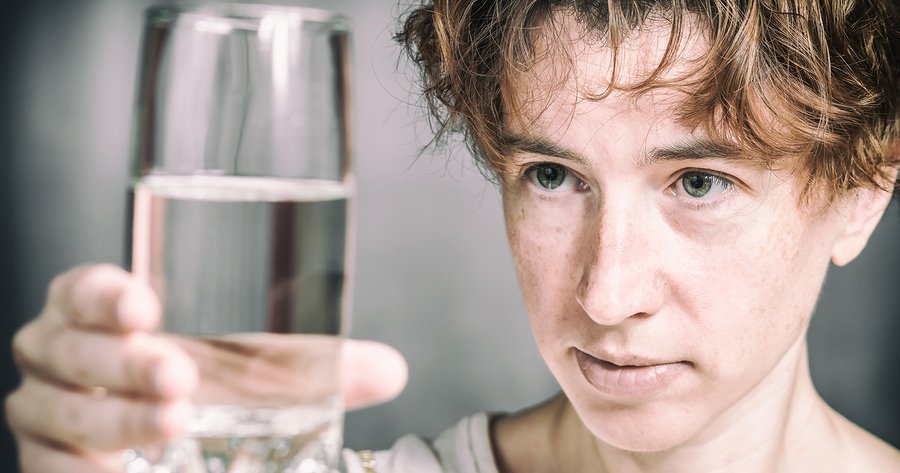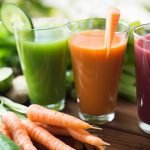Last Sunday, I was talking about detoxing to a group of 1,400 at a Peak Potentials event. (Had a great time.) During the course of the talk, I mentioned the problem of pharmaceutical drugs in drinking water as being a reason to regularly detox. Maybe about 50 people in the room nodded their heads in understanding. The rest seemed surprised. They shouldn’t have been. This is old news. Although…
Just 5 hours after I gave my talk, a major AP news story broke about this exact same topic. Amazingly, they too presented it as breaking news — and the mainstream media picked it up and ran with it as such. But the truth of the matter is that the story here isn’t about pharmaceutical drugs in our drinking water; it’s that this news is being treated as a breaking story. How short memories seem to be. (1, 2, 3, 4)
In point of fact, the prevalence of pharmaceuticals in water is nothing new. During 1999-2000, the U.S. Geological Survey conducted the first nationwide investigation of the presence of pharmaceuticals, hormones and other organic contaminants in over one hundred streams in some thirty states. Ninety-five contaminants were targeted including antibiotics, prescription and nonprescription drugs, steroids, and hormones. Eighty-two contaminants were found in at least one sample. Eighty percent of the streams tested positive for one or more contaminants. Seventy-five percent tested positive for two or more contaminants. Thirteen percent contained an astounding twenty or more targeted contaminants. As I said, the AP story that seems to be ripping through the internet is hardly breaking news.
It should be noted that there is no widespread treatment used by municipal water treatment plants that removes these contaminants. Once these drugs enter the water supply, you end up drinking them unless you remove them yourself at your house. (More on that later.) Are the levels significant? Probably not significant enough to produce acute effects, but more than likely significant enough to produce subtle behavioral and reproductive changes. It’s worth noting that a subsequent 2005 US Geological Survey found that in some Potomac River tributaries nearly all of the male smallmouth bass caught were abnormal “intersex” fish. Well, then again, maybe not so subtle effects!
But back to the exciting news of the day!
The AP story
 The Associated Press broke the story last week that they had just concluded a 5-month investigation that found that drinking water supplies of at least 41 million Americans contain a vast array of pharmaceuticals — including antibiotics, anti-convulsants, mood stabilizers and sex hormones, albeit in very small amounts.
The Associated Press broke the story last week that they had just concluded a 5-month investigation that found that drinking water supplies of at least 41 million Americans contain a vast array of pharmaceuticals — including antibiotics, anti-convulsants, mood stabilizers and sex hormones, albeit in very small amounts.
Despite these findings, water utilities insist that their water is safe since levels are far below medical dose levels — a fairly ballsy statement, considering that most utilities don’t even test for the presence of drugs in the water, and those that do won’t release the findings. For example, the head of a group representing major California suppliers said the public “doesn’t know how to interpret the information and might be unduly alarmed.”
Part of the problem is that the federal government doesn’t require any testing and hasn’t set safety limits for drugs in water. Of the 62 major water providers contacted in the AP study, only 28 municipalities tested their water for pharmaceuticals. Among the 34 that don’t are Houston, Chicago, Miami, Baltimore, Phoenix, Boston and New York City’s Department of Environmental Protection, which delivers water to 9 million people. Of those that do test, some test for the presence of just one or two pharmaceuticals — hardly comprehensive. And finally, the AP’s investigation also found that 28 of 35 watersheds that serve as the natural sources for most of the nation’s water supply are contaminated.
Although government authorities insist the water is safe, other experts aren’t so sure. The presence of so many prescription drugs — and over-the-counter medicines like acetaminophen and ibuprofen — in so much of our drinking water is heightening worries among scientists of long-term consequences to human health. Researchers don’t yet understand the exact risks from decades of exposure to combinations of low levels of pharmaceuticals, but recent studies have found alarming effects on human cells and wildlife. In the course of their investigation, the AP discovered that pharmaceutical drugs have been detected in the drinking water supplies of 24 major metropolitan areas — from Southern California to Northern New Jersey, from Detroit to Louisville, KY. Here are some of the key test results obtained by the AP:
- 56 pharmaceutical drugs or byproducts, including medicines for pain, infection, high cholesterol, asthma, epilepsy, mental illness and heart problems were found in Philadelphia’s drinking water.
- Anti-epileptic and anti-anxiety medications were detected in Southern California drinking water.
- When tested upstate at its source, New York City’s drinking water was found to contain trace concentrations of heart medicine, infection fighters, estrogen, anti-convulsants, a mood stabilizer, and a tranquilizer.
- In several cases, officials at municipal or regional water providers told the AP that pharmaceuticals had not been detected, but the AP obtained the results of tests conducted by independent researchers that showed otherwise.
- And the drinking water for Washington, D.C. tested positive for six pharmaceuticals. Perhaps the presence of these pharmaceuticals in the water supply that feeds the center of government — including an anti-seizure medication, two anti-inflammatory drugs, two kinds of antibiotics and a common disinfectant — explains some of the legislation coming out of Washington.
And for those of you reading this who live outside the US, sorry. Contamination is not confined to the United States. More than 100 different pharmaceuticals have been detected in lakes, rivers, reservoirs and streams throughout the world. Studies have detected pharmaceutical drugs in waters throughout Asia, Australia, Canada and Europe — even in Swiss lakes and the North Sea. Studies in Germany, for example, in the late 90’s, found lipid-lowering drugs, antibiotics, analgesics, antiseptics, beta-blocker heart drugs, epilepsy drugs, and drugs serving as contrast agents for diagnostic X rays both entering and leaving sewage treatment plants and in river water. And at significant levels!
Where do the drugs come from?
Animals
Animals involved in intensive farming receive all kinds of antibiotics and hormones to prevent disease and increase growth rates. Cattle, for example, are given ear implants that provide a slow release of trenbolone, an anabolic steroid used by some bodybuilders, which causes cattle to bulk up. Unfortunately, studies have shown that up to 10 percent of the steroid passed right through the animals. As it turns out, about 40 percent of U.S.-produced antibiotics are fed to livestock as growth enhancers. Water sampled downstream of a Nebraska feedlot had steroid levels four times as high as the water taken upstream. Male fathead minnows living in that downstream area had low testosterone levels and small heads.
And as a side note, manure from these animals, which contains traces of such pharmaceuticals, is often spread on land where it can then wash off into surface water and percolate into groundwater.
People
Quite simply, people take drugs — both recreational and medicinal — and then eliminate it. When your next door neighbor takes chemotherapy drugs and then goes to the bathroom (either exit), any excess drugs not used by the body pass out with the waste, down through the toilet, and into the sewage systems. From there it goes to a sewage treatment plant, which cleans up the water. But most treatments do not remove all drug residues. That means it then either comes back to you directly as drinking water (Half of all people drink water that has been used at least once before. Don’t think about that too much.) or gets dumped into rivers where it’s picked up as part of the drinking water of the next town down the line. Add to that the anti-depressants used by the person who lives down the street, the excess caffeine from the energy drinks slugged down by the wired arbitrage lawyer across the road, not to mention the psychedelics used by her teenage son, and you start to get a sense of the problem.

And while researchers do not yet understand the exact risks from decades of persistent exposure to random combinations of low levels of pharmaceuticals, recent studies — which have gone virtually unnoticed by the general public — have found alarming effects on human cells and wildlife. Laboratory research has found that trace amounts of pharmaceuticals affect human embryonic kidney cells, human blood cells, and human breast cancer cells. The kidney cells grow too slowly; the blood cells show biological activity associated with inflammation; and the cancer cells proliferate too quickly.
The danger
The danger is less from any single drug found in a glass of water, than from trace amounts of multiple drugs found in multiple glasses of water drunk over multiple years. Dr. Francesco Pomati, out of the University of New South Wales, has shown that both human and fish cells are affected by drugs at concentrations routinely detected in surface waters. The danger according to Pomati is that water quality standards are actually fundamentally flawed because they look at individual chemicals. Unfortunately, when you mix a complex soup of chemicals together, even at very low concentrations, the toxicity can be very different.
As can be found on www.waterwarning.com:
- A report by the Ralph Nader Study Group, after reviewing over 10,000 documents acquired through the Freedom Of Information Act, stated that “U.S. drinking water contains more than 2100 toxic chemicals that can cause cancer.” The Federal Council On Environmental Quality reports that “Up to two thirds of all cancers may be attributed to these low level toxins.” and that “once contaminated, our ground water will remain so for tens of thousands of years… if not geologic time!”
The bottom line is that mounting evidence now indicates that the real danger to human beings lies in the mixtures of pharmaceutical drugs found in drinking water at low concentrations — consumed over time. And what kinds of danger are we talking about:
Puberty
Is it possible that all the prescription hormones (birth control pills, HRT, growth hormones for farm animals, etc.) are having an impact on human development and health? Most assuredly! A hundred years ago, the average age of puberty for girls in the United States was 15-16. As recently as ten years ago, it had dropped to an astounding 8-9, which was then accepted as the new norm. But that norm lasted less than a decade as new studies indicate that it has dropped to 6-8 years old — with some girls even showing signs of puberty as young as age 3. And as for boys, the incidence of cryptorchidism (being born with testicles not fully descended) is now steadily increasing. Although low birth weight has traditionally been considered the major causative factor, it doesn’t account for the steady increase in incidence. In utero exposure to pharmaceutical grade xenoestrogens, on the other hand, does. (1, 2)
Antibiotics
The release of antibiotics and antivirals into waterways and drinking water supplies is particularly worrisome. This turns the world’s water supply into both a witch’s cauldron for breeding super bacteria and viruses, as well as a totally self-integrated transportation network for carrying these super pathogens into every corner of the world — and to every person living in it. Drug resistant strains are developing faster than scientists ever thought possible. For example, until recently, Tamiflu (oseltamivir) was thought to be immune from this problem — and yet resistance was documented in 2005. Frighteningly, even in that article, scientists took solace in the fact that zanamivir was at least inviolate. Less than two years later, that little bit of consolation was gone as zanamivir resistant influenza strains had made their first appearance. Releasing a steady stream of every antibiotic and antiviral drug known into the world’s water supply can only accelerate this process.
What to do
First of all, bottled water does not necessarily avoid exposure. Many bottlers simply repackage tap water and do not typically treat or test for pharmaceuticals — this according to the industry’s main trade group. And even if the bottlers use “spring” water, as we have already seen, the pharmaceutical drugs in question have made their way into many rivers and aquifers. There is no safety in tap or bottled water. You need to treat the water that comes into your house to remove the chlorine, fluoride, chemical residues, heavy metals, bacteria, parasites, and pharmaceutical drugs in your water. And you need to remove all of these toxins not only at the tap where you drink, but also where you bathe and shower. So how do you do it? You really only have 4 choices.
 Get a system for the entire house that treats the water where it enters your house. This is obviously the most expensive way to answer the problem, but if you actually get a good system that removes all of the toxins, it’s the best way to go.
Get a system for the entire house that treats the water where it enters your house. This is obviously the most expensive way to answer the problem, but if you actually get a good system that removes all of the toxins, it’s the best way to go.- There’s no question that a good water distiller will provide the “cleanest” water you can get, but you need to be sure it incorporates a charcoal filter, since toxins like chlorine can both vaporize and recondense along with the water you’re trying to clean.
- There’s one other question to consider. Distilled water, by definition, has no mineral content. For years there has been much debate as to whether that’s good or bad. “Distillerites” claim that demineralized water is more natural — like rain water and glacier water — and that minerals in drinking water end up in your joints. The argument against distillers is that most animals drink water that has had contact with the ground and acquired a high mineral content. Prime examples are the high mineral water of the Hunzas and the coral calcium water of the islands off of Okinawa — two areas renowned for the age and health of their inhabitants. As for me, I don’t think it matters, provided that if you drink distilled water, you add ionic trace minerals to it before you drink it. You also need to understand that because it’s devoid of minerals, distilled water is bio-electrically dead, which is another reason you want to add trace minerals. And as for the question of mineral-laden water leading to joint deposits, studies have proven that the calcium which deposits in joints comes from inside the body — leached from your own bones because of too much acid in your diet — not from the water you drink. But again, remineralize the water with some liquid trace minerals andall is well.
- Reverse osmosis units produce a good quality drinking water and will definitely remove the pharmaceuticals. The main problem I have with them is that they waste a huge amount of water — many gallons of waste for each gallon of usable water. I’m not really sure that’s justifiable nowadays with the looming water shortage we face.
- A good water filter can do the job, but keep in mind that it will cost you more than $29.95 or even $100. To find one that will truly remove ALL of the bad stuff, while leaving in the beneficial minerals, you will need to pay $250-$300. It will require several stages and several different kinds of filtering media to remove chlorine, bio-chemicals, drug residues, fluoride and heavy metals, and ultra-small bacteria such as chryptosporidia.
In addition
- When possible, use glass to hold your water, not plastic, and especially not the thin plastic used in most sports bottles. Absolutely avoid drinking water that has a strong plastic smell or taste.
- If you’re not using a central home purification system, remember to get a good shower filter to remove the chlorine from the water you shower in. Understand that the filter is on the shower, not the bath. The bath water (unless you fill the tub from the shower) will still be toxic. But even here, there are filters you can buy that hang on the spout and clean the water used to fill the tub.)
Oh yeah, and one more thing, adding chlorine to the water, as is the wont of most municipalities, makes some pharmaceuticals even more toxic.












Thank you for all of your
Thank you for all of your research and expertise you share with all of us. Albeit shocking, I believe the information to be accurate and quite credible. Please tell me, do you have a brand(s) of an entire household filtering system that you recommend (for example, what you use at your own home)? I am currently living in China but would like to buy a system in the U.S. and bring it back to China and have it installed in my home here. Thank you!
I was hoping your article on
I was hoping your article on the importance of water filtration would also include different types of water filters you recommend. Can you include different types of water filters that would be effective at filtering out these toxins and drugs?
What about alkaline water?
What about alkaline water? Currently drinking Viva Water.
Is there any particular
Is there any particular company that you can recommend that not only removes the pharmaceuticals, but also flouride, and heavy metals such as chromium 6? Some I have looked into are expensive initially and require costly replacement filters, such as aquaspace.
Good water distillers do not
Good water distillers do not require many replacement filters if that is what you are considering.
I was actually looking for a
I was actually looking for a list of companies you would recommend to provide the safest water. I was not considering distilling since the taste and lack of minerals is not satisfactory for me. Thanks
I live in a Condominium, what
I live in a Condominium, what type of filtration system can you recommend? I have been searching for several months, but have not been able to find anything suitable. Thank you. Kitty
Hey guys. You may want to try
Hey guys. You may want to try Aquatru water filter. I read about it from one of the newsletters I am subscribed to.
Where to find a good filter?
Where to find a good filter? The information I have researched is spotty and most times untrustworthy. Looks like we all need some direction here.
Now use Berkey for drinking/cooking. Aquasana for shower.
Have an AquaTru but it rarely functions, untrustworthy product.
And from reading about it , many have the same problem with this device which was not inexpensive.
Believe more is needed.
So many similar questions here.
Thank you
Please see our “Products”
Please see our “Products” page for any recommendations. Thanks!